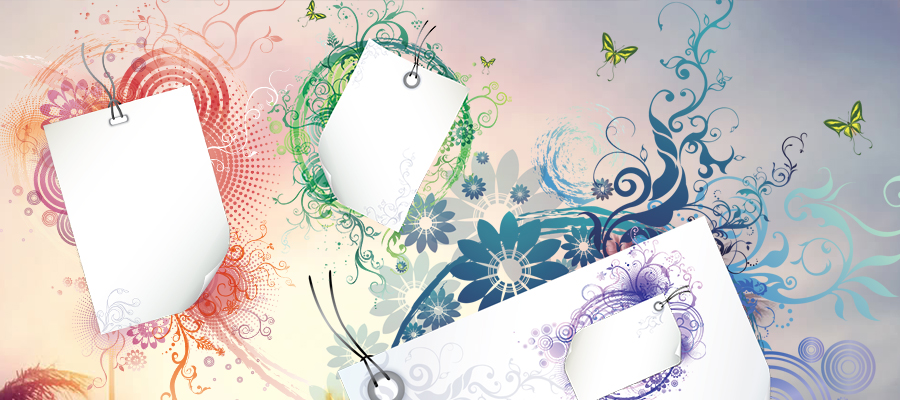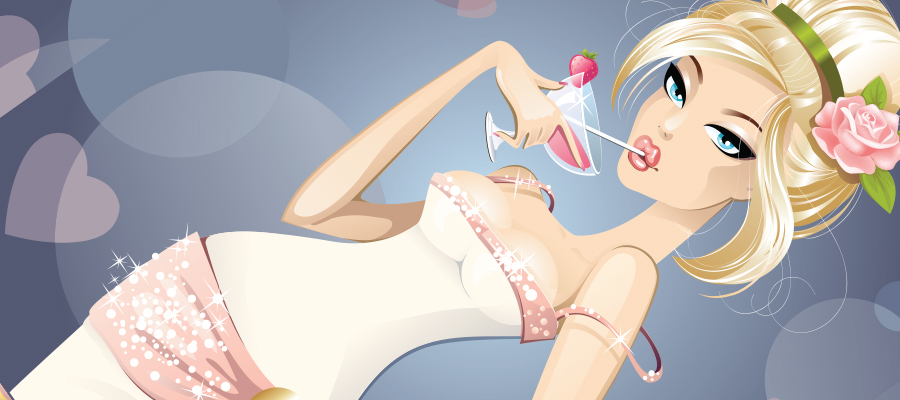Today, many graphic designers have begun to return to retro styles. Professionals are increasingly going back to the past for inspiration. There they find stylish designs, billboards, logos, etc. that inspire them to create awesome projects. When making a vintage design, there is a special focus on font selection. After all, to pick out a typeface that would be concise and elegant fit into the structure of the overall appearance is quite difficult. Moreover, there are a huge number of premium fonts and free options for any purpose on the Internet. But how to choose and apply them is sometimes hard to understand.
In this tutorial, we will show you how to create a vintage effect for your font. This straightforward guide is suitable for anyone who is familiar with Photoshop and Illustrator. But before the detailed tutorial, let's find out what features the vintage style has.
What is Vintage Style: Let's Get More Info
Generally, the meaning of the word vintage is characterized by a certain object, a typical item of its time that brings unique style features. Vintage style makes us think of the past and get nostalgic.
The most typical technique in this design style is the artistic aging of the project. It is actively used for image editing. One of the most common aging techniques is sepia. The color scheme is usually monochrome or dull, as if the colors faded with time. Using retro lettering will add a vintage feel to your project.
Retro fonts can come in a variety of shapes. But with the color scheme it is necessary to think carefully. The bright colors do not fit into the concept of vintage. The best approach is a soft pastel tone, a bit shabby reminiscent of old age.
Retro style intrigues, creates a sense of value, subconsciously causes confidence in visitors. This appearance is always memorable. Using the retro style often involves such characteristic elements as antique calligraphy, lettering, old photographs, neon elements, pop art, the inclusion of retro details that remind of that time.
The Key Features of Retro Font Design
- Geometric shapes. Here geometry works like nowhere else. The retro style uses rectangles, circles, triangles and other shapes for emphasis. They stand out with vibrant colors in relation to the background. It is important to consider this when creating a typeface. You can make sharp font lines, create sharp outlines.
- Pastel color palette. Vintage correlates with light and pastel hues. The main ones are light gray, beige, coffee, etc.
- The use of textures. This is exactly what you need to pay special attention to. Retro style in design is characterized by the presence of vintage textures. It can be old and crumpled paper, rough fabric, wood and others. In our tutorial we will actively use this particular characteristic.
- Ornaments, outlines. Typography with embossing, volume, shadow effects is more relevant than ever.
Creating Vintage Typography for Your Projects
Step 1: Get inspired.
We encourage you to look for as many examples of retro design as you can. We are not just talking about scripts here, but also vintage objects that can inspire you to create the perfect typeface. You can do your sketches on paper or online. Use all your creativity and genius ideas. For example, look at these posters:

Do you like it? Try some of them!
Step 2: Start with Illustrator.
Illustrator is a very handy program that includes many tools for work. You will find everything you need for successful design.
So, open the program and create a document with the following parameters: 1000x1000px, RGB, 300ppi. Using the Type Tool add text to the blank canvas. You can use free options or draw your own. Be sure to set the text to a white fill. Here you also need to turn the inscription into a regular vector object. For this, use the Create Outlines function.
Step 3: Create Outlines.

In the Illustrator menu, select Object, then click Path and Offset Path. Here, specify the offset size and fill color. You also need to set the text to a parallel path and it should be equal to the indent size only with a minus. That is, if the main size is 1mm, then the parallel size should be -1mm. Here we already notice an interesting change. Now copy the inner parallel contour. Next, paste the copy into the foreground.
Step 4: Create Stylish Lines and Shadows.

Now let's create horizontal lines to give an interesting retro effect. To do this, take the Line Segment tool and create a horizontal line over the text (select the thickness to your liking). Duplicate the lines. Then convert them to a group. Use the Expand function to turn the strokes into fills.
Carefully select the black inner contour that we created earlier and copy it. Add a group of lines to the selection, then click the Intersect button. Paste two copies of the inner black path. Then select the upper copy and move the object a bit lower to create a shadow effect. Select both copies of the path and click the Minus Front button.
Now select the copy and the original again and from the menu choose Object, then Blend and Make. That way you will have a smooth transition.
Step 5: To the Perfect Result A Little More...
In this step there are only a few essential points left. You need to combine all the components and leave the resulting object without any extra points. Do the following for this:
- Object,
- Path,
- Simplify,
- Specify 99% in the first field.
Now you can change the colors of the work. Here, think about how you want the end result to look. Select the black objects, go to the menu and choose the Fill Color function. Now you can assign any color you want to the elements (Don't forget about retro fonts and don't add bright colors). Do the same for the white objects.
It will also be great to add a stylish texture. Group all the font objects and choose Make Mask in the Transparency table to apply the texture. Before doing this, you have to download the needed texture. We used Dust And Scratches Textures. Paste them in and that's all! Let's take a look at the result:

It's just adorable! Now you can also create extraordinary vintage effects by applying different parameters, playing with the functions of the illustrator and looking at your fascinating work with delight at the finish.




















